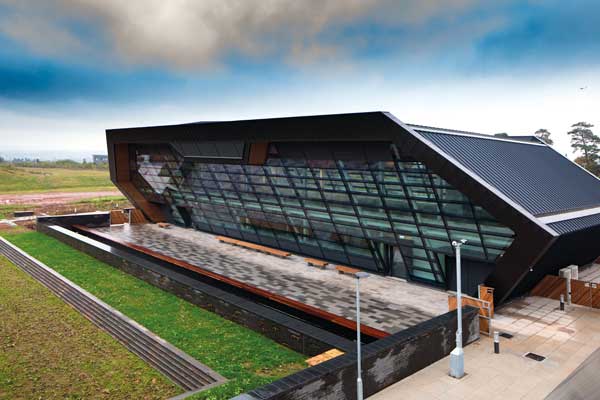News
Met Office supercomputer hub handed-over
 Main contractor Willmott Dixon has completed construction work on the Met Office’s supercomputer facility at the Exeter Science Park.
Main contractor Willmott Dixon has completed construction work on the Met Office’s supercomputer facility at the Exeter Science Park.
Fit-out and installation of the computer, which is said to be one of the most powerful in the world, is now under way and the facility is due to be fully operational by Spring 2017.
As well as helping the Met Office to improve its weather predictions, the computer will also be a catalyst for regional growth in the South West, supporting collaboration and partnerships between science, business and academia.
Located a short distance from the Met Office’s current headquarters, the computer will be housed in a purpose-built steel-framed IT Hall, which stands adjacent to another steel structure known as the Collaboration Space (pictured).
The IT Hall is a single storey steel portal-framed structure measuring approximately 90m-long and 25m-wide, offering a central 15m-wide column-free span for the computer hall.
The Collaboration Space office building is a far more complex steel structure leaning in two directions, which has required enhanced stability systems to resist the forces generated by the complex and eccentric geometry.
William Haley Engineering fabricated, supplied and erected 230t of structural steelwork for the project.
The supercomputer will be 11 times more powerful than the current system used by the Met Office and will have 120,000 times more memory than a top-end smartphone.
It will be able to perform more than 16,000 trillion calculations per second, and at 140t it will weigh the equivalent of 11 double-decker buses.
The supercomputer’s sophisticated forecasts are anticipated to deliver £2bn of socio-economic benefits to the UK by enabling better advance preparation and contingency plans to protect people’s homes and businesses.












